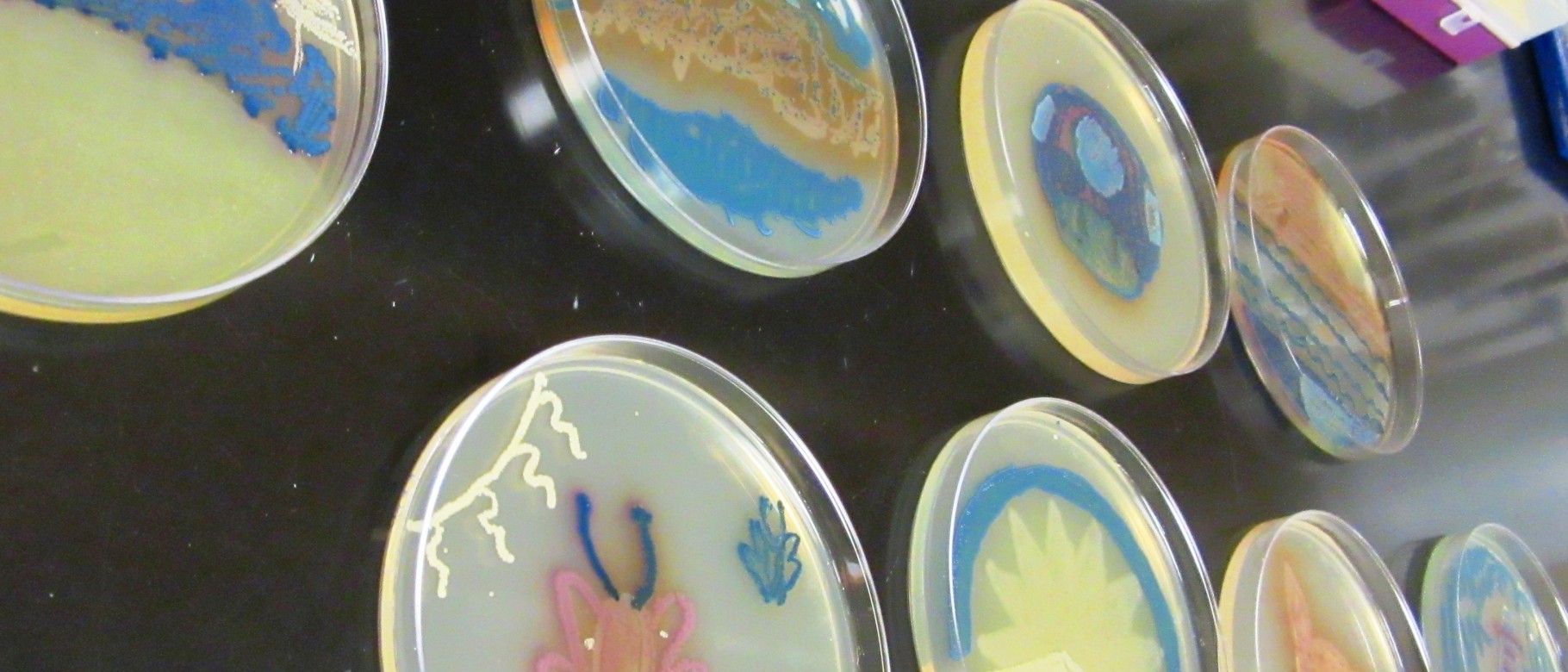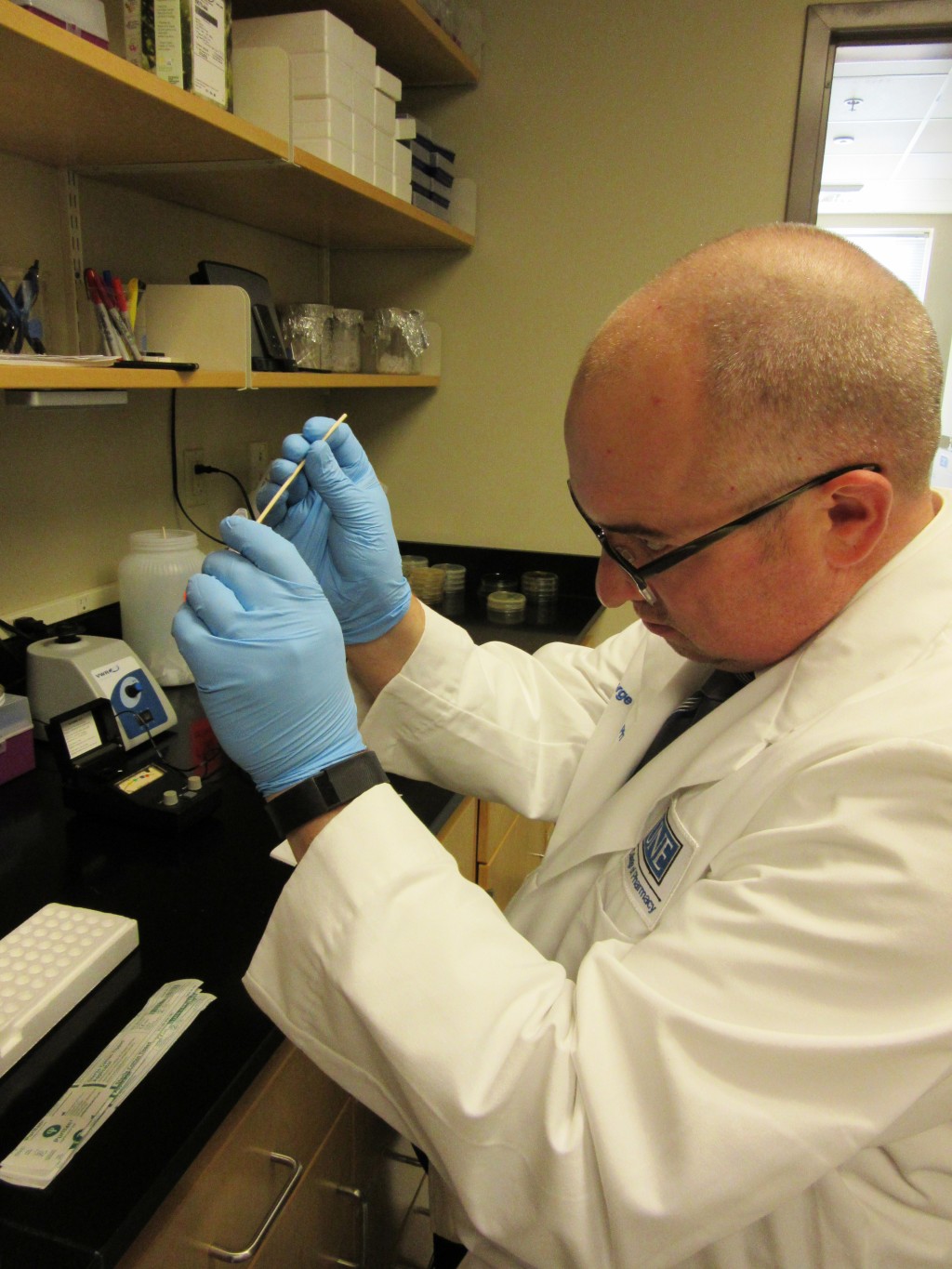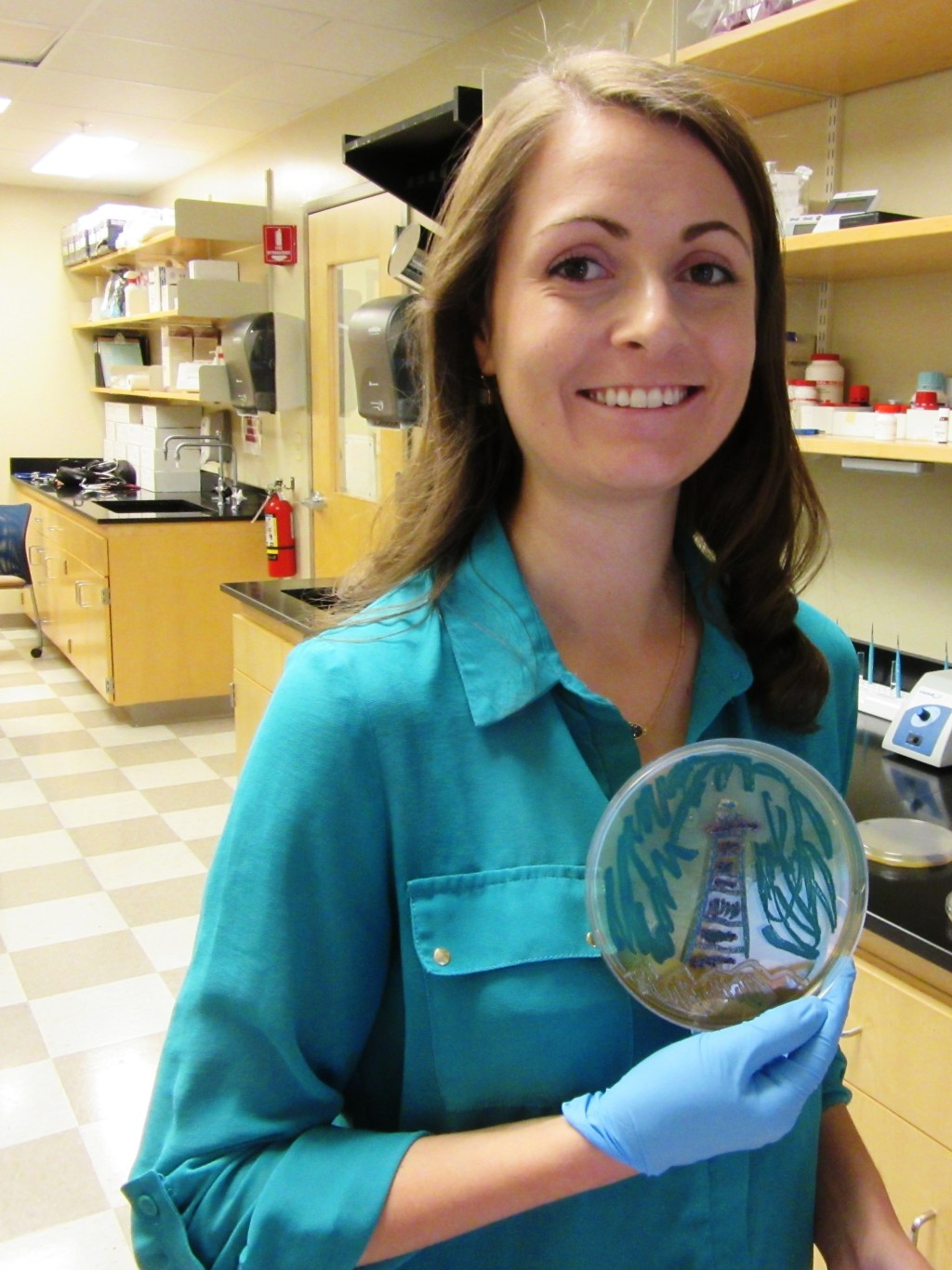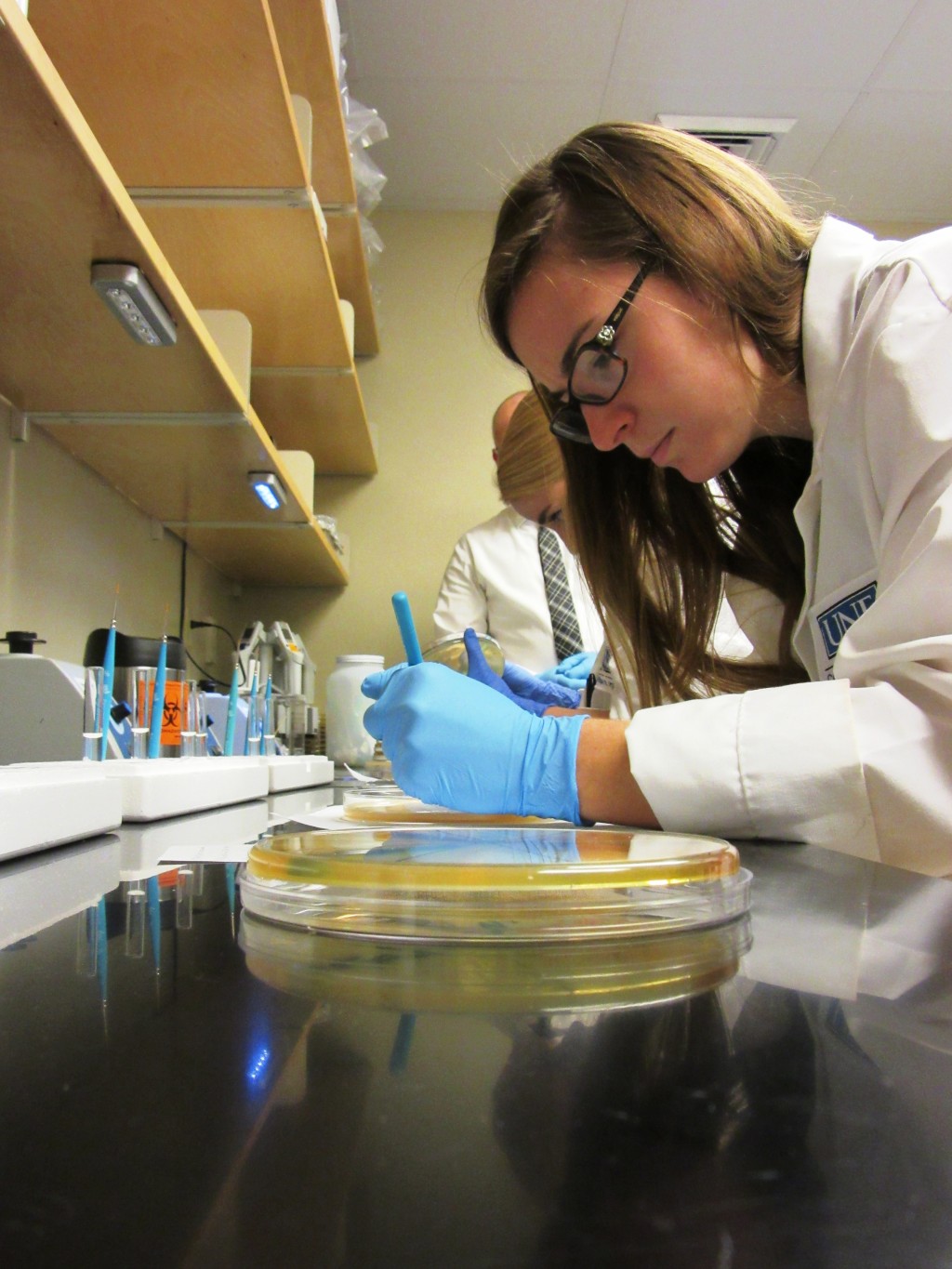Art meets microbiology in innovative UNE College of Pharmacy course

For many pharmacy students, finding time to pursue creative outlets in the midst of scientific studies can be a challenge. However, in the new Advanced Infectious Diseases elective course at the UNE College of Pharmacy, both disciplines are an integral part of the curriculum.
Students in the class have been exploring microbial art, also known as agar art. Using agar as a medium for artwork was explored by the Scottish scientist Alexander Fleming, best known for his role in developing penicillin. Fleming was also a painter who blended his two passions by creating designs with bacteria in petri dishes. The bacteria and fungi used were species that naturally produce colored pigments, and the agar contained nutrients resulting in color production when certain microorganisms were grown on it.
In recent years, the concept of mixing art with science has grown in popularity, as demonstrated by the American Society for Microbiology’s development of the international Agar Art Contest. Now in its third year, the 2016 contest received over 115 entries from 26 countries, with designs ranging from a wolf to a beer stein.
Inspired by the competition, George Allen, Pharm.D., associate professor and chair of the Department of Pharmacy Practice and Joel Coon, Pharm.D., assistant clinical professor in the College of Pharmacy decided to incorporate microbial art into their Advanced Infectious Diseases course this fall. Eight third-year Doctor of Pharmacy students used a chromogenic medium that was developed to allow differentiation of pathogenic bacteria that typically cause urinary tract infections. A palette of 10 colors, each produced by a different bacterial species, was used as “paint.” Among the bacteria used were Acinetobacter baumannii (an important cause of hospital-acquired infections), which produces a beige color when grown on this agar, Escherichia coli (a very common cause of urinary tract infections), which produces a pink color, and Klebsiella pneumoniae (an increasingly serious threat to public health because of the emergence of antimicrobial resistance), which produces a metallic blue color.
The students completed the work in phases, first developing ideas for their artwork. Some drew templates on paper for tracing, while others painted directly on the agar. When it came time to paint, the students used fine brushes and solutions of each bacterium to create their designs on each agar plate. They examined their plates the next day, finding that the bacteria had grown into the images they had painted. Finished designs included a lighthouse, flowers, butterflies and a beach scene.
“The class enabled students to not only broaden their knowledge of infectious diseases and microbiology, but to work creatively in the process,” Allen said.
Read the article in the Journal Tribune.
To learn more about the University of New England’s College of Pharmacy, visit www.une.edu/pharmacy
To apply, visit www.une.edu/admissions


